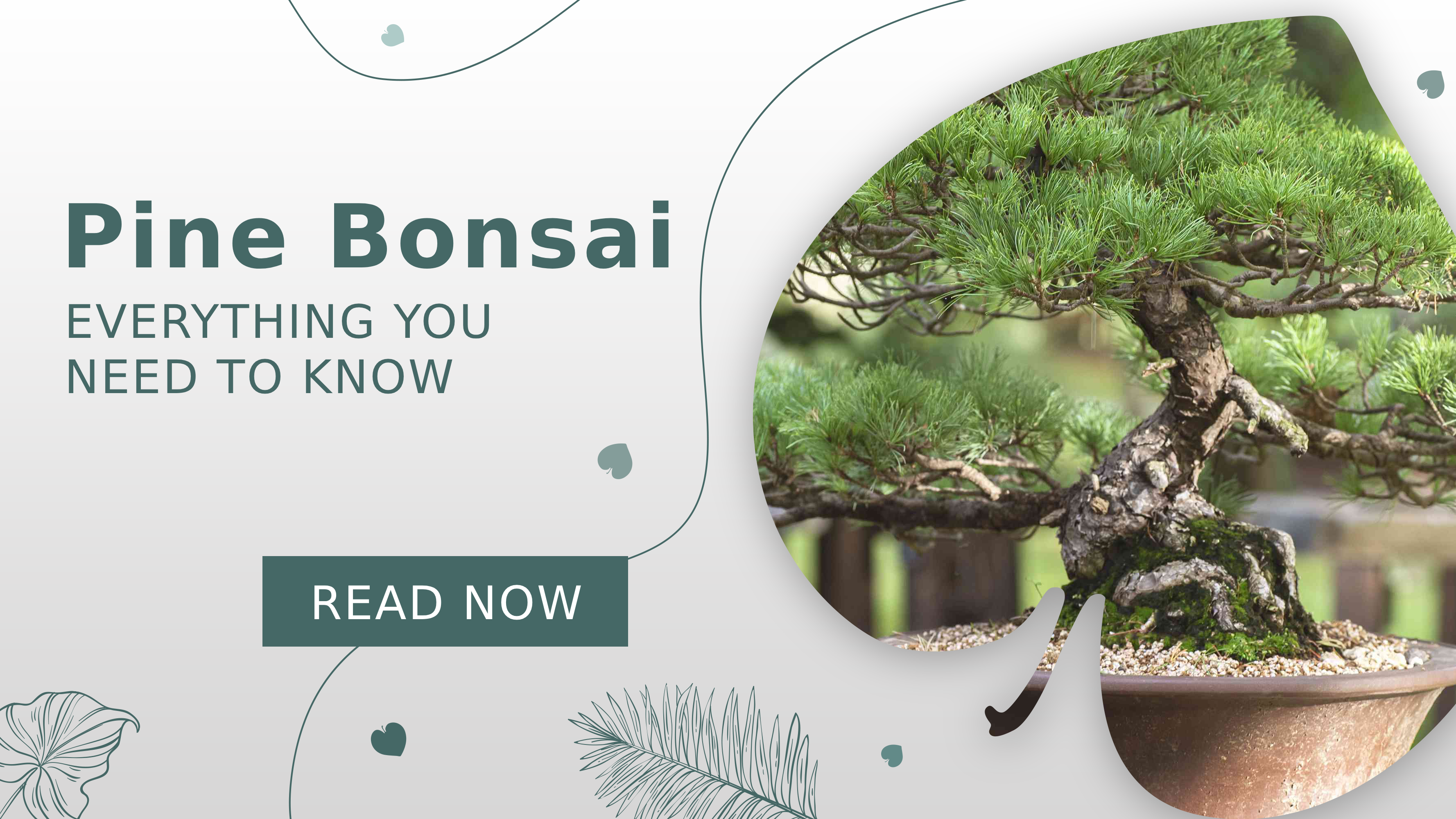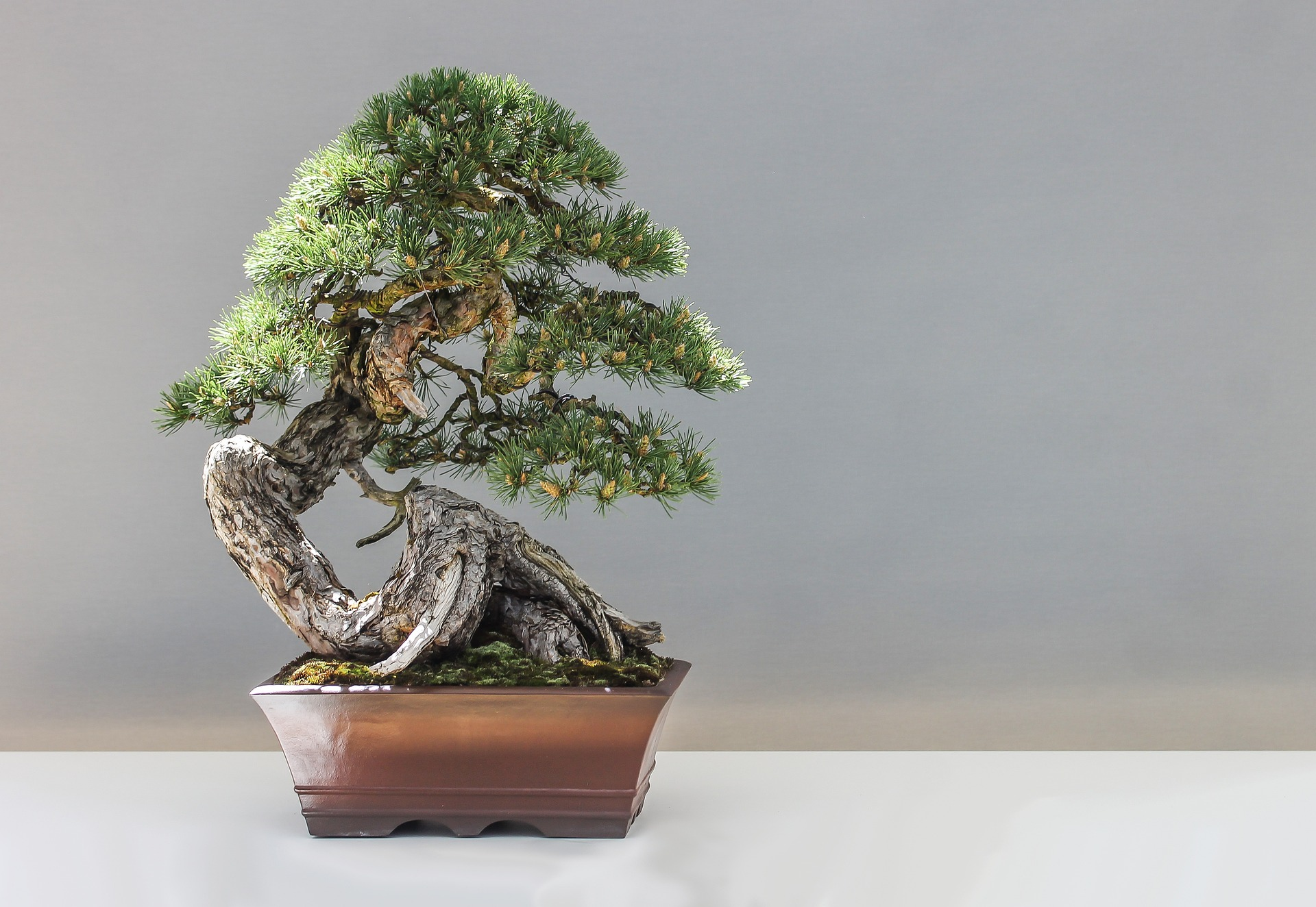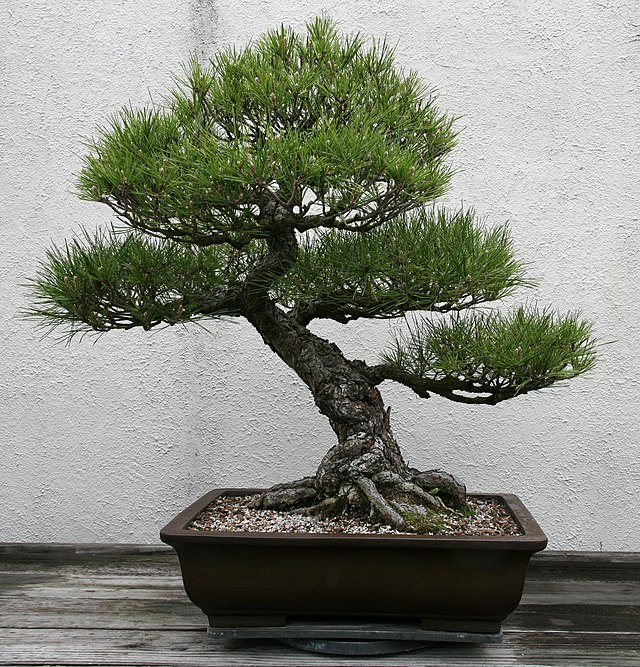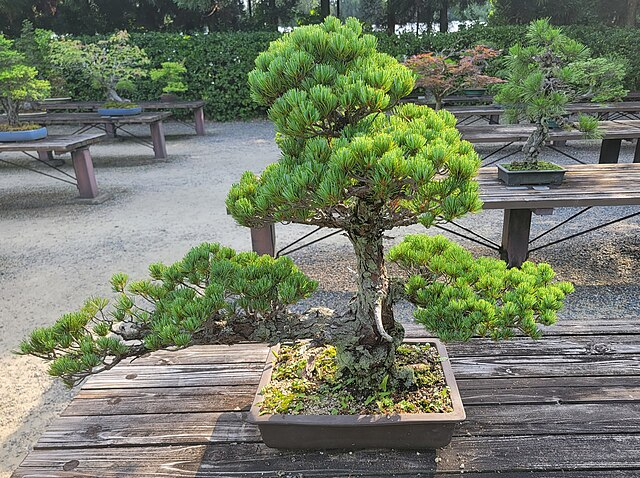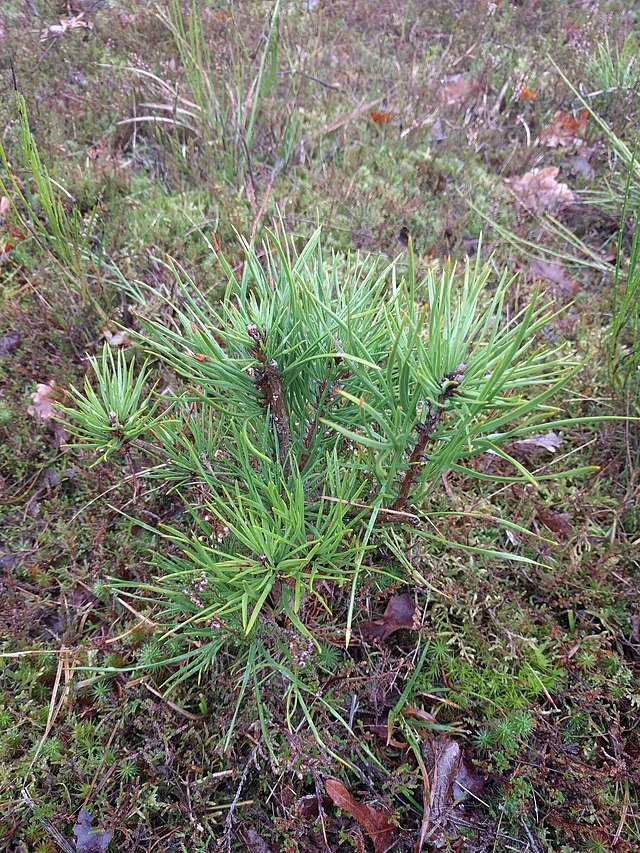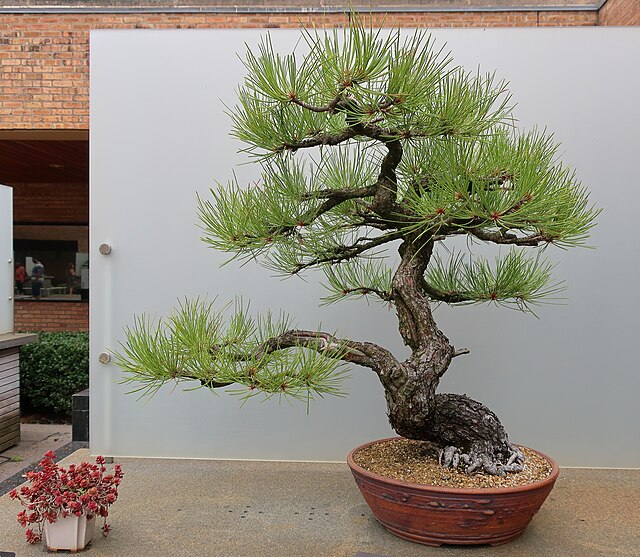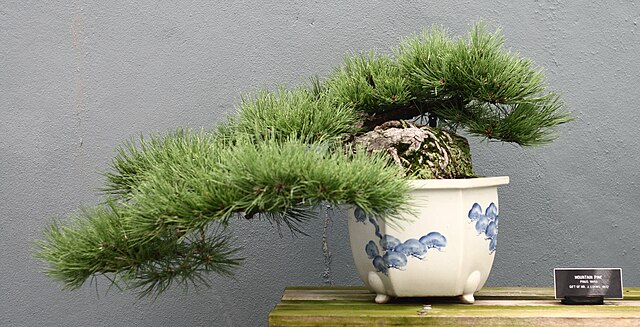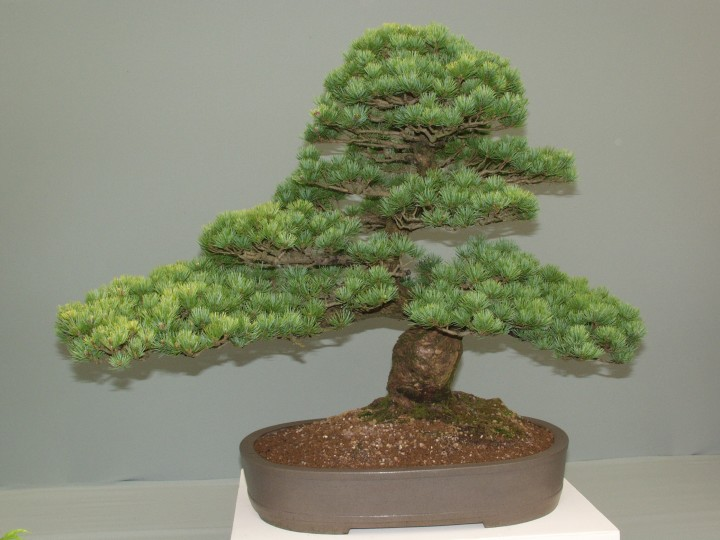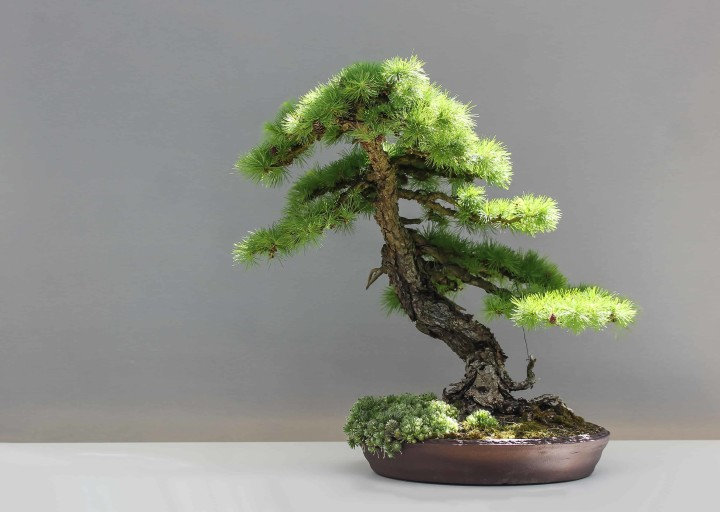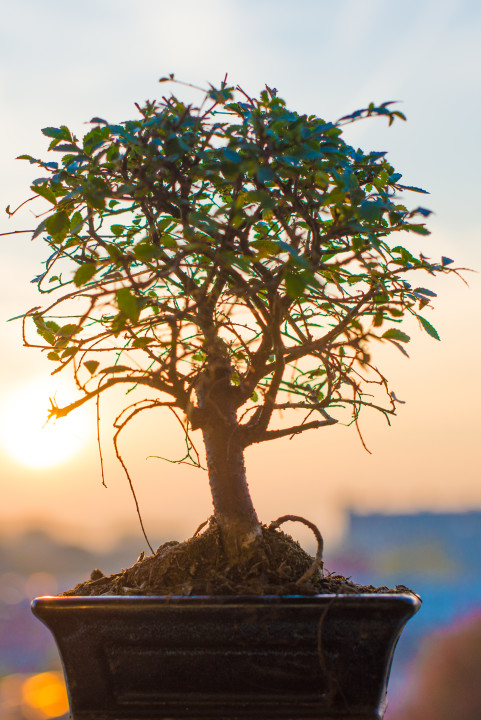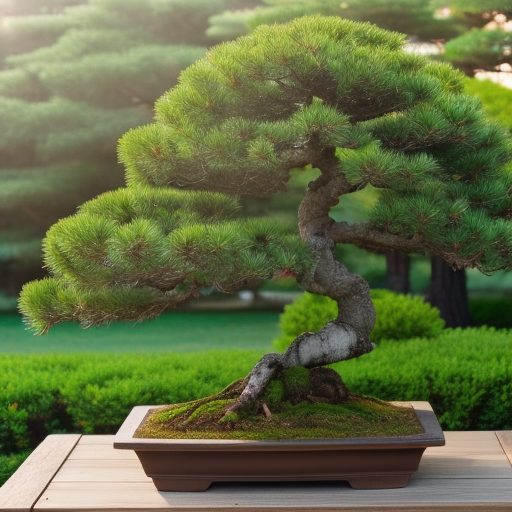HousePlantJoy is supported by our audience. When you purchase through one of our links, we may earn a small affiliate commission. As an Amazon Associate I earn from qualifying purchases. Your cost is not affected.
==================
Have you ever been amazed by the calm beauty of pine bonsai trees? These little tree wonders, full of peace and old-world charm, are more than plants. They’re like tiny, living statues with a rich backstory. Let’s take a trip into the pine bonsai universe.
Bonsai, especially pine bonsai, mixes gardening know-how with artistic flair. Pine bonsai comes in many types, from the tough Japanese black pine to the gentle Japanese white pine. They bring the wild, untamed outdoors to our living rooms and backyards.
Join me as we go deep into the pine bonsai world. You’ll see how these excellent trees add a tranquil, timeless vibe to your space. It doesn’t matter if you’re already a bonsai fan or just starting. Getting to know the pine bonsai is super cool and rewarding. Are you ready to explore the rugged Scots or pretty white pine? Enjoy reading!
Getting to Know The Pine Bonsai
Pine bonsai trees aren’t just any trees. They’re a unique, eye-catching group in the big bonsai world. The scoop on these tiny trees is vital to loving their beauty and complexity.
The Heart of Pine Bonsai
At heart, a pine bonsai is a tiny version of its big tree cousins. But it’s not just about being small; it’s about showing the spirit of a pine in a compact shape. Pine bonsai trees can be any pine type, each with flair in the bonsai world. You’ve got the bold Japanese black pine, famous for its tough vibe. The gentle Japanese white pine is known for its softer style. Each pine bonsai tree has its own story.
When it comes to types, there are loads! The list goes on, from the sturdy Scots pine and It’selegant Japanese white pine to the hardy ponderosa pine. Every type has its look and growing way. Take the dark, thick leaves of the Japanese black pine. They’re a stunning contrast to the light, breezy white pines.
A Style for Everyone
Pine bonsai trees rock because they’re so versatile. Fancy the lonely, windswept style of a Scots pine or a more upright, neat look like the Japanese black pine bonsai? There’s a pine bonsai for every taste. They fit into many bonsai styles. These include the straight ‘chokkan’ trunk to the wild ‘sharimiki’ (driftwood style).
Nature in Miniature
What’s cool about pine bonsai is how they pack the toughness and beauty of nature into a tiny tree. Picture a pine bonsai, with its peeling bark and strong branches, looking like it’s standing alone on a rugged mountain. Or a Japanese white pine, its fine needles and curvy branches making you feel like you’re in a calm, snowy forest.
Pine bonsai trees are more than pretty. They’re a journey, a commitment, a deep natural bond. Caring for a pine bonsai needs patience and love, but it’s worth it. Something is terrific about seeing your pine bonsai grow and change.
Popular Varieties of Pine Bonsai
Now, It’s time to zoom in on some top pine bonsai types. Each brings its unique vibe, making Pine Bonsa a diverse and relaxed group.
Japanese Black Pine (Pinus Thunbergii)
Let’s talk about a bonsai superstar! The Japanese black pine is a big hit with lots of fans. It’s challenging and grows strong, standing out with its chunky bark and mighty branches. People love it because you can shape it in various ways, perfect for newbies and old hands in bonsai.
Japanese White Pine (Pinus Parviflora)
Then you’ve got the Japanese white pine – the chill cousin of the black pine. It’s all about fine needles and elegant, twisty branches, like a symbol of peace. This one needs more TLC to keep looking good but trust me, it’s worth it.
Scots Pine (Pinus Sylvestris)
Meet the Scots Pine. It’s famous for its unique peeling bark and being cool with different weather. So it’s great for all kinds of places. Its needle length and deep green color make it a real eye-catcher. This packs loads of personality into a bonsai.
Ponderosa Pine (Pinus Ponderosa)
Are you a big fan of the wild, natural look? Check out the Ponderosa pine. Straight from western North America, this type is known for a thick trunk and rough bark. It might give you a workout shaping it, but the result is like a slice of the wild, mini-sized.
Mugo Pine (Pinus Mugo)
Last up is the Mugo pine. Small but mighty, this one’s super suitable for beginners because it’s easy to look after. It might be minor, but it brings a lush, green punch with a canopy that you can style neatly.
Explore the must-have bonsai toolkit, thoughtfully curated to support your pine bonsai endeavors. These comprehensive tools are the secret to achieving bonsai mastery with your pine trees. #ads #commissionsearned
Caring for Your Pine Bonsai
Caring for a pine bonsai might seem daunting. But it’s really about understanding the needs of these trees and enjoying the process. Let’s dive into some essential tips to help your pine bonsai thrive.
Sunlight and Placement
First things first, pine bonsai trees love sunlight. They thrive best in areas where they can receive plenty of direct sunlight. It’s vital for their health and helps maintain their needles’ vibrancy. Whether it’s a Japanese black pine or a white pine, make sure your pine bonsai gets its daily dose of sunshine. But watch out in sweltering conditions. A bit of afternoon shade won’t hurt.
Watering and Humidity
When it comes to watering, consistency is critical. Pine bonsai prefers to be dry and smooth. So, check the soil daily. If the top layer feels dry, it’s time to water. But be careful with overwatering, as this can lead to root rot. Good drainage in the soil mix is essential to avoid waterlogging. Every pine bonsai species, from the Scots pine to the ponderosa pine, will be thankful.
Feeding and Fertilizing
Feeding your pine bonsai is crucial for its growth and health. Using an organic bonsai fertilizer is a safe bet. So you can provide all the necessary nutrients without the risk of burning the roots. A balanced fertilizer applied during the growing season should do the trick. Remember, feeding is not just about quantity but also timing and consistency.
Pruning and Trimming
Pruning is where you can get creative with your pine bonsai. It’s not just about maintaining size but also about shaping the tree. It doesn’t matter whether you have a single-flush pine like the Japanese white pine or a two-flush pine like the Scots pine. Understanding their growth pattern is crucial for proper pruning. Regular trimming of new growth and removing excess old needles will encourage healthier, denser foliage.
Repotting for Health
Repotting is an essential aspect of pine bonsai care. It’s generally needed every two to three years. It helps in refreshing the soil and managing the root system. Be gentle and make sure not to damage the roots. A fresh soil mix with good drainage properties can give your plant a new lease on life.
Pruning and Training Pine Bonsai
Pruning and training your pine bonsai is about more than just care. It’s an art form that turns your bonsai tree into a living sculpture. Whether you’re working with a Japanese black pine or a mugo pine doesn’t matter. The proper techniques can make all the difference. Let’s break it down into manageable steps.
Pruning
Pruning your pine bonsai is about more than just cutting back growth. It’s about directing the tree to shape it according to your vision. Start by removing dead or weak branches to improve the tree’s health. Then, think about the silhouette you’re aiming for. It doesn’t matter whether you’re working with a ponderosa pine or a Japanese white pine. Pruning helps control the size and also influences the tree’s energy distribution.
Timing Is Everything
The best time to prune your pine bonsai is mid-summer or early autumn. This is especially true when dealing with pine species like the Scots or Japanese black pine. This is when you can see the structure of your bonsai and make informed decisions about shaping. Pruning during this period also minimizes stress on the tree.
Candle Pruning Techniques
Candle pruning is a term often heard in the pine bonsai world. This is especially true with two flush pines like the Japanese black pine. It involves trimming the new shoots, or “candles,” that emerge in spring. This technique helps control the growth and size of needles. Candle pruning is adjusted slightly for one flush pine, like some pine tree bonsai, such as the Japanese white pine. This is because they have only one major growth spurt annually.
Wiring for Shape
Training your pine bonsai through wiring gives you more control over the direction and growth patterns. Wiring can be done almost any time of year, but do not damage the tree’s bark or branches. It doesn’t matter whether you’re guiding a straight trunk on a ponderosa pine or creating a dramatic curve in a Scots pine. Wiring allows you to sculpt your bonsai to your liking.
Patience
Remember, shaping a pine bonsai tree takes time and patience. Growth patterns vary among different pine species. So, what works for a Japanese black pine might not suit a white pine. Be gentle, observe how your tree responds, and adjust your techniques accordingly. With time, your plant will start to reflect the care and creativity you’ve invested in it. It will become a true masterpiece of nature and nurture.
Common Challenges and Solutions with Pine Bonsai
Even the best-cared-for pine bonsai can hit some bumps. There’s often an easy fix. Here’s a rundown of typical troubles you might face and how to tackle them.
Pest Problems
Like spider mites, these tiny guys love to munch on your pine’s sap, making it weak. What’s a telltale sign? Your needles might look off-color. Please watch your bonsai, especially if you see any needle changes. Have you found some pests? A soft insecticide soap or neem oil usually does the trick. With types like ponderosa pine or Scots pine, staying healthy is vital to keeping pests away.
Fungal Diseases
Watch out for fungal diseases. They often appear as weird needle colors or a dusty white coating. You can dodge most fungi with good airflow, proper drainage, and not letting things get too damp. Have you caught a fungus? Fungicides can help, but make sure you also fix whatever caused it in the first place.
Needle Troubles
Needle problems, like turning yellow or brown, could mean watering issues, lousy drainage, or insufficient nutrients. Keep your watering on point, and make sure your soil drains well. A good, balanced bonsai fertilizer can perk things up. Remember, different pines (like Japanese black pines versus Scots pines) have their needle looks. So what’s normal for one might not be for another.
Weak Growth
If your pine bonsai’s growth is weak, check the basics: light, water, and food. Not enough light or wonky watering habits can slow things down. And if it’s not getting the proper nutrients, growth can stall. Ensure your pine gets plenty of sun, steady watering, and regular feeds during growth time. And you should see some action.
Root Rot
Root rot is a big deal. This is often from too much water and lousy soil drainage. If the roots are dark and mushy, it’s time to get moving. Repot your bonsai, snip off the rotten roots, and switch to a soil mix that drains well. This is super important for pines like ponderosa or mugo.
Discover the essential cutting and watering tools, carefully selected for nurturing your pine bonsai. These tools will be your trusted companions on your journey to pine bonsai perfection. #ads #commissionsearned
Wrapping It Up
Tending to a pine bonsai, whether a strong Scots pine or a gentle white pine, goes beyond a mere pastime. It’s like a moving meditation, a miniature bond with nature. Remember each time you prune, water, or watch your pine bonsai. You’re stepping closer to mastering these living works of art.
Patience and persistence are essential in this journey. Whether you’re a pro shaping a Japanese black pine bonsai or a newbie watching your first pine bonsai evolve, each hurdle is a chance to grow and learn. Revel in your bonsai’s seasonal changes, from the new spring sprouts to the lush green summer needles.
Remember, your pine bonsai planting is a continuous path. Each year unfolds new challenges, lessons, and splendor. Stay devoted. Keep absorbing knowledge. And above all, savor each moment with your splendid pine bonsai. Happy planting!
FAQs
What's the Best Pine Species for Beginners?
Are you new to pine bonsai? Start with the Japanese black pine and Scots pine. They’re both fairly robust and forgiving, ideal for beginners. The Mugo pine, with its tough nature, is another excellent choice for those just diving into bonsai care.
How Often to Water Pine Bonsai?
Watering varies by species, climate, and season. Generally, water your pine bonsai when the top layer of soil feels dry. Be careful to avoid both extremes. Don’t let the soil completely dry out, but also avoid overwatering, which can cause root rot. It takes a bit of practice to strike the right balance.
Can Pine Bonsai Be Indoor Plants?
Pine bonsai, like Japanese white and black pines, typically do best outdoors. They need plenty of sunlight and the natural changes in temperature to flourish. It’s okay to bring them inside briefly for display purposes. But they shouldn’t be kept indoors for extended periods.
Learn More About Houseplants!
Discover different types of houseplants with us! Join us on Facebook, Instagram, and Twitter for beautiful photos, plant care tips, and a community that celebrates the joy of indoor gardening.
Facebook: https://www.facebook.com/houseplantjoyblog
Instagram: http://instagram.com/houseplantjoy20
Twitter: https://twitter.com/HouseplantJoy
Let’s nurture our green spaces together!

